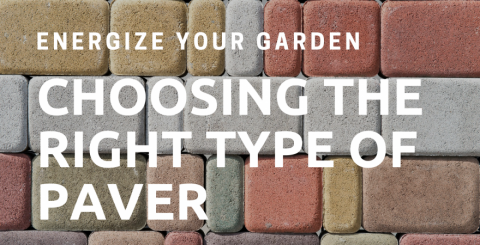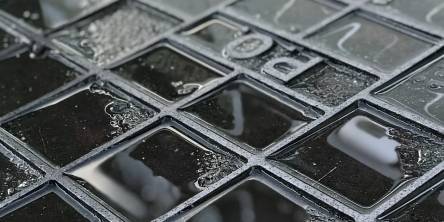Choosing the Right Type of Paver to Energize your Garden

If you're planning your dream garden, choosing the right paving can do wonders. Think of it this way ‒ you're going to live in your home for a long time and having a well-designed garden can turn a dull, outdoor space into the most relaxing place in the house.
However, choosing the right kind of paving that goes well with your garden can be challenging. With so many choices available in different price ranges, how will you end up choosing the right one? Surely, no matter how bold your vision is, there's likely to be a paver that's meant to suit all your needs, right?
Here are some helpful tips to help you come up with ideas for your next project:
Think About How Your Paving Will Be Used

Consider the location and the expected frequency that the paving will be used. Think about how much weight and traffic they’ll be able to tolerate on a daily basis.
For example, you want to add a patio to complement beautifully with your garden. If you love the characteristics of natural stone materials because it gives off a perfect feel when watching the sunset with a glass of wine at hand, then you'll be more naturally drawn to limestones, slates, and sandstones.
However, if your garden paving will have to continually endure a lot of footfall because of the kids and animals in your home, then you should consider getting the ones that are slip-resistant with family-friendly textured surfaces.
Choose a Style That Matches Your Garden
Just like performance, appearance is also equally as important. You have to consider how your garden paving will complement with the style of your home. Does your house already have existing walls that help create a particular look? Do you have a contemporary or a traditional theme going for you? Which style do you prefer ‒ would you go for a more rustic, or a chic-inspired look?
If you’re into traditional designs, then river-worn gravel, hazel hurdles, and rustic clay pavers are more fitting. However, if you're going for a more fresh, and modern take, then a planed oak, quartzite, sawn limestone and polished concrete is perfect. Take note though, that planed and sanded materials usually cost a little bit more.
Don't be afraid to break the rules every once in a while. You can use more traditional materials such as sandstone planks and porphyry in a more contemporary way. Furthermore, you can also use pavers to accent the key elements in your home such as a prominent landscape, or a valuable piece of architecture.
Choose the Right Color, Finish, and Material
Use of hues with earthly brown colors, honey, deep brick red, and dark gray works well with most materials. The rule here is to be subtle with the colors. Pink and yellows are usually big no-no's. Even a rainbow-colored sandstone might look odd. Consider also the amount of sunlight that hits your pavers as the color tends to change. If this is the case, opt for light-colored pavers that significantly lighten the area that’s completely shaded.
Most garden designers prefer to use three or four different materials. Their usual picks are brick, oak, and granite to avoid creating a busy look and achieving more unity in the overall design. Don't think that you can’t break up one monotonous material either. In fact, a knapped flint place alongside clay bricks is relatively common in rural gardens.
Take Into Consideration the Effects of Weather
![]()
Ideally, your garden paving should be slip-resistant, durable, and requires very little maintenance. Good quality materials will always cost more, but usually, they're in it for the long run.
One thing that you can do is to check whether a particular material weathers well. Usually, copper, natural stone, and oak will only get better with age.
Is it Affordable?
A major consideration in choosing pavers is your budget. The cost of most patio pavings out there usually depends on the quality, size, design, construction, and quantity. But what if your desired choice of paver can't meet your set budget? Well, you can always go for more cheaper alternatives.
To give you an idea, split natural stone usually less pricey than cut, while loose gravel is less costly than resin-bound. Having a concrete imitation paving is usually cheaper than the original. To get more information about the cheaper options, check out this post about boosting landscaping ROI.
Consult the Experts
If you're still unsure how a paver will perfectly match your garden, then it helps to consult an expert in the field. If you do your research on the internet, many companies offer different kinds of designer pavers. Having expert advice from these professionals can be a great help especially in deciding what the right paver to choose is.
Similar Articles
Learn how a tidy home boosts mental health, reduces stress, improves productivity, and enhances well-being with simple, practical cleaning tips.
Have you ever harboured dreams of constructing your dream home filled with bespoke designs, carefully selected fittings and high-quality finishes? Have you ever fretted over the durability, aesthetics, and overall quality of your construction project? Are you constantly in search for the perfect balance between beauty and strength?
Cockroaches are one of the most common pests found in homes and businesses, and they are known for their resilience and ability to thrive in even the most unsanitary conditions. These pests can quickly infest kitchens, bathrooms, and other areas, spreading bacteria, allergens, and other harmful pathogens.
A well-maintained yard drainage system is key to preserving the beauty and health of any property. Poor drainage can lead to standing water, soil erosion, and even foundational damage to structures over time.
Keep your seaside home in top shape with these 4 expert tips! Learn about weatherproof materials, smart maintenance, and managing coastal challenges effectively.
Explore the future of roofing! Discover energy-efficient materials, smart systems, and sustainable designs reshaping modern home construction trends.
HVAC stands for heating, ventilation, and air conditioning. These all-in-one systems keep your home comfortable and improve air quality throughout a building. Often used in commercial buildings, HVAC units are increasingly used in residential buildings.
Safeguard your home after storms with timely roof repairs. Detect damage early, choose durable materials, and rely on a pro for lasting protection and peace of mind.
Learn how to balance a clean home and family life with these 6 practical tips to manage clutter, involve kids in chores, and set realistic expectations.









